Tandem kayaks are designed for two paddlers. But what if you want to embark on an independent journey?
So, the question arises – Can one person use a tandem kayak? In other words: Can one person use a two person kayak? And the answer is YES. Using a tandem kayak alone, also known as a two-person kayak, is possible.
Although tandem kayaks are designed for two people, they can be easily maneuvered by a single individual. So, if you find yourself wanting to embark on a solo kayaking trip but only have access to a tandem kayak, fret not!
However, maneuvering may seem cumbersome if you fail to distribute the weight properly. With some adjustments and techniques, you can enjoy the experience of paddling alone in a two-person kayak.
In this article, we’ll discuss all you need to know about paddling a tandem kayak alone. Let’s dive into this!
Contents
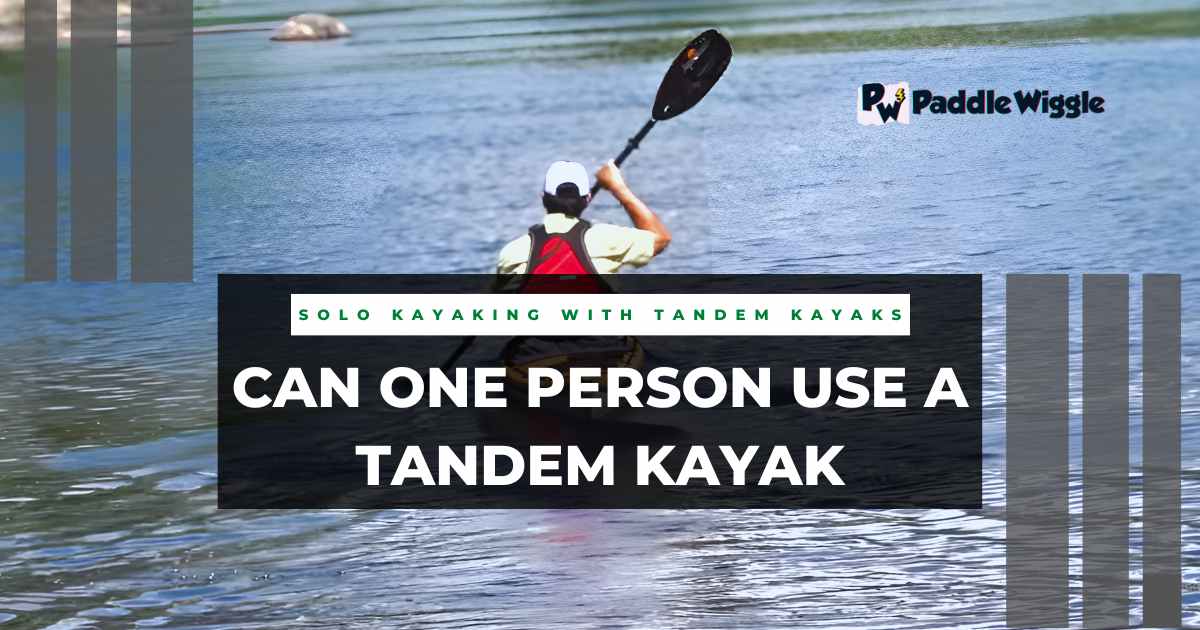
Why Paddle A Tandem Kayak Solo?
Many people envision a single-person vessel gliding through calm waters. However, there are numerous reasons why one might choose to paddle a tandem kayak solo. One significant advantage is the ability to embark on thrilling solo adventures while enjoying the benefits of a two-person kayak.
Tandem kayaks offer several advantages for those seeking solitary exploration. Firstly, they provide ample space and storage options. Unlike single-person kayaks that often have limited room for gear, tandem kayaks typically feature extra storage compartments and larger hatches.
This additional space allows solo paddlers to bring essential equipment, camping gear, or even furry companions without compromising comfort or maneuverability.
Maximizing Space And Capacity In Solo Tandem Kayaking
When you have more space in your tandem kayak, you can bring along lots of stuff for your adventures!
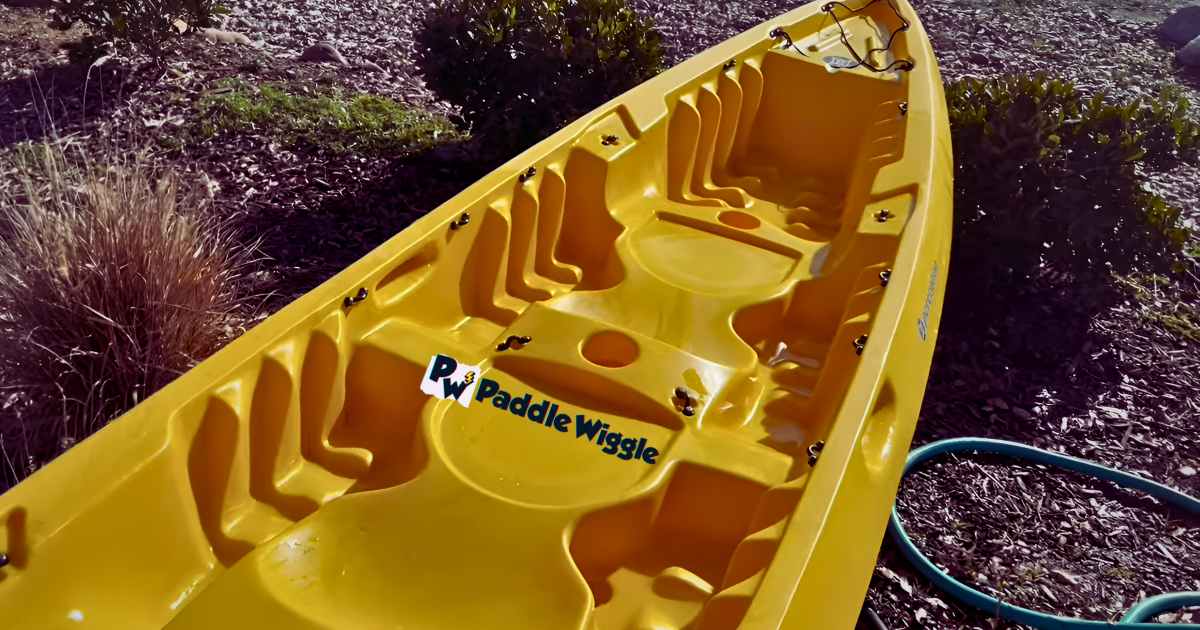

You can go on longer trips for a few days and explore new places. Imagine paddling down a beautiful river or exploring the quiet coast with all your camping gear, food, and safety items right there in your kayak.
And if you’re looking for a kayak with maximum weight capacity, they can best match you! Most tandem kayaks hold 500-600 lbs.
With the extra space, you can set up your camera securely and take steady pictures without worrying about tipping over.
Enhancing Solo Paddling Stability With Tandem Kayaks
Extra width makes tandem kayaks more stable. This means they are less likely to tip over or feel wobbly in the water. And this enhanced stability becomes especially useful in tricky conditions, such as when the water is choppy or unpredictable due to strong currents or wind.
This increased stability means a safer and more confident kayaking experience for solo paddlers. Using a tandem kayak alone can be a great choice if you prefer recreational kayaking or camping.
The wider hull of the tandem kayak provides you with a sense of security, making it easier to stay balanced and in control of your kayak.
The Versatility Of Solo-Use Tandem Kayaks
The versatility of using a tandem kayak solo is a compelling reason for many people. Although these kayaks are made for two people, they can easily be adapted for individual use. You can find tandems with adjustable seating positions, allowing you to optimize weight distribution and balance when paddling alone.
Some tandem kayaks even have removable center seats. So you can quickly turn them into single-person kayaks in no time.
This adaptability means you can use the same kayak for solo adventures or group outings, making it a flexible choice that caters to your specific needs.
Are Tandem Kayaks Harder To Paddle Alone? Exploring The Difficulty Level
Many people wonder if it is more difficult compared to having a partner. The truth is that maneuvering a two-person kayak alone does present some unique challenges.
Without a second paddler or additional adjustments, solo paddlers may find themselves facing certain difficulties with tandem kayaks.
Here are a few of them:
Challenges In Maneuvering And Controlling
When you paddle a two-person kayak alone, it can be harder to steer and control it. That’s because it’s bigger and not as easy to proper by one person.
When there’s only one person paddling and steering, it’s tougher to go through tight spots or make quick turns. The kayak doesn’t respond as quickly to your movements, so you need to put in more effort to paddle it by yourself.
Difficulties In Weight Distribution
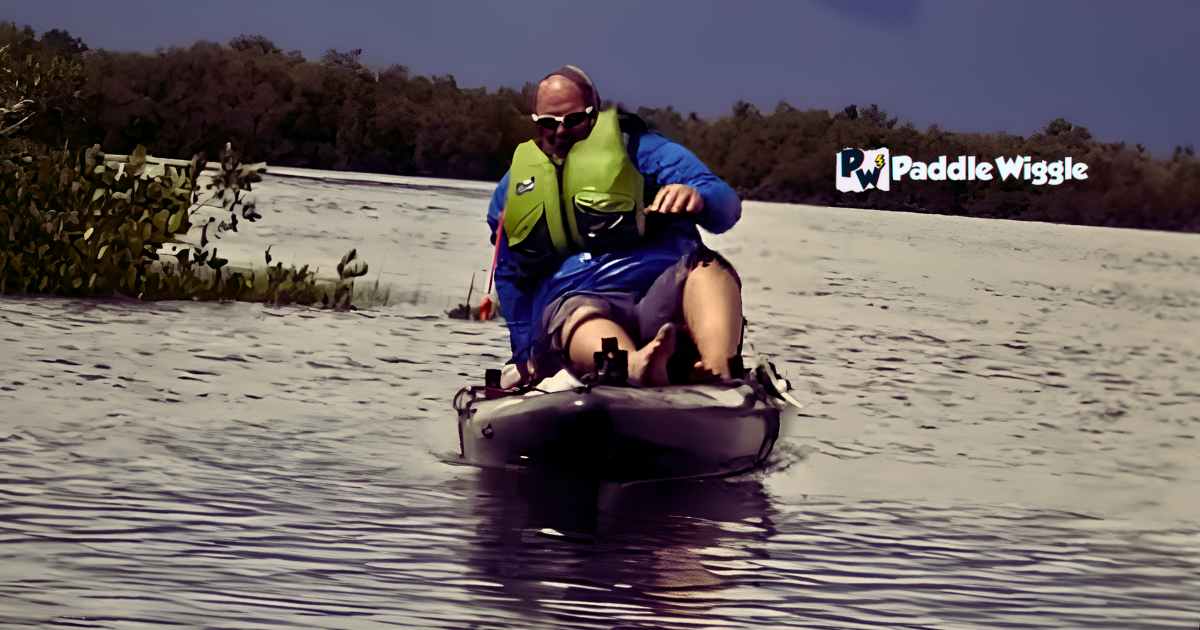

Weight distribution plays a crucial role in the handling and stability of any kayak, especially when operating a two-person kayak alone. These kayaks are designed for two people, so they have designated seating positions that optimize balance and control.
When paddling it solo, this balance can be disrupted. The lack of weight at one end of the kayak can cause instability, making it harder to maintain control while on the water.
Efforts In Paddling A Two-Person Kayak Alone
Paddling a two-person kayak all by yourself is harder than having a second paddler with you.
When two people paddle together, they can use their strength and work together to move smoothly. But when you’re alone in a tandem kayak, all the paddling is up to you.
This means you need to burn more calories to go as effectively as you would with a partner. It’s doing all the work on your own can be a bit tiring.
Adjusting A Tandem Kayak For Going Solo
When you want to use a two-person kayak by yourself, you can make some adjustments to make it work better for you. With a few changes, you can make it easy to maneuver for you.
Solo Seating In A Two-Person Kayak: Where To Sit Alone
Setting up the seating arrangement is crucial for achieving balance and control of the water.
To begin with, let’s discuss where to sit when kayaking alone in a tandem kayak. The optimal position for a solo paddler is typically in the rear seat of the kayak. This placement helps maintain proper weight distribution and allows you to have better control over steering and maneuvering. By sitting towards the back, you can easily reach the rudder or skeg if your kayak is equipped with one.
However, depending on the specific design of your tandem kayak, there may be other viable options for solo seating.
Some kayaks have adjustable seats that can be moved forward or backward along a track system. If this is the case, you may find it beneficial to experiment with different positions to find what works best for you.
Here are a few things that you need to follow:
- Sit in the rear seat of the kayak for optimal control and weight distribution.
- Experiment with different seating positions if your kayak allows adjustable seats.
- Consider securing gear or adding ballast near the front seat to maintain balance.
- Adjust footrests, backrests, and other components for maximum comfort during single-handed operation.
Overcoming Weight Distribution Challenges Alone
When you paddle a two-person kayak all by yourself, it can be tricky to balance the weight. After all, they are not meant for solo adventures.
So without someone else in the front or back, it’s important to use some tricks to keep it stable.
Here are some things you can do to balance the weight:
- Positioning: Try sitting closer to the front or back of the kayak to balance the weight better. You can experiment with different positions to find the most stable one.
- Add Weight: You can put some heavy things like sandbags or water jugs in the kayak to help balance it out.
- Tilt the Kayak: By tilting your body slightly forward or backward, you can control how much of the kayak is in the water. This can help balance the weight along the length of the boat.
- Practice: The more you paddle solo, the better you’ll get at balancing the weight. With time, you’ll learn how to make small adjustments to stabilize the kayak.
Even with these tricks, your first days may still be challenging. Just be careful and practice to get better at it!
And remember, keeping the weight balanced is essential for the kayak’s stability and how well it moves through the water.
Controlling A Two-Person Kayak Alone
Paddling a two-person kayak by yourself can add advantages, but knowing how to control it properly is essential.
Here’s an in-depth guide for mastering the art of solo kayaking in a tandem kayak!
Lower Center Of Gravity
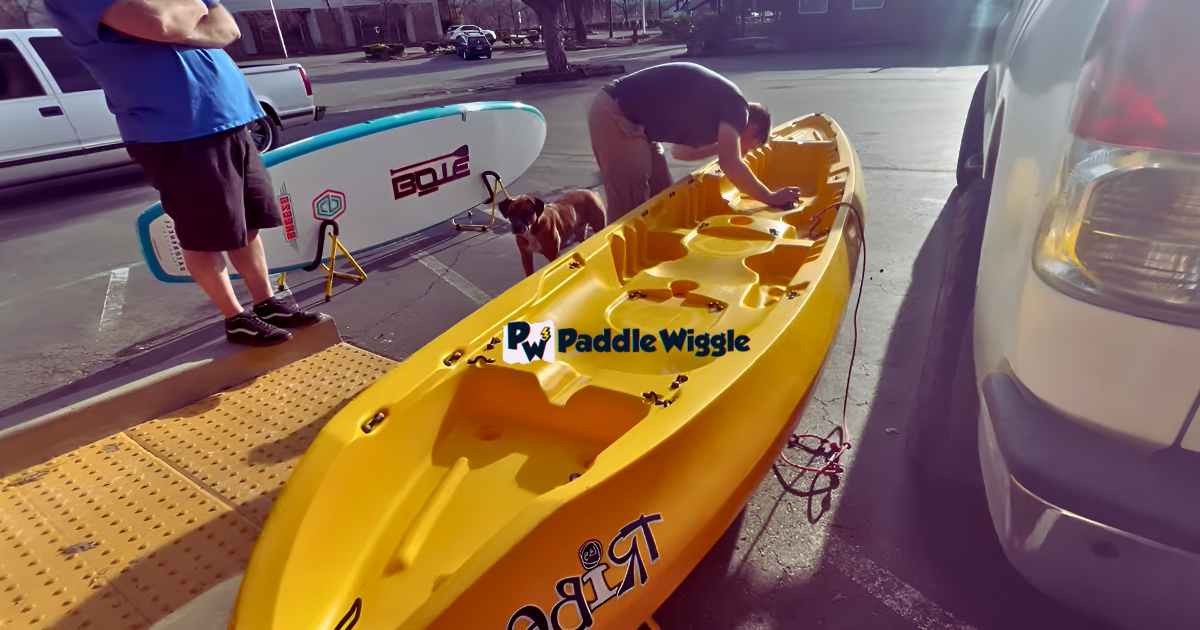

When you’re paddling a two-person kayak alone, its keeping your body low and centered within the kayak is essential. This means sitting or kneeling down instead of sitting high up. Doing this creates a more stable and balanced position, like having a firm foundation, which helps prevent the kayak from being capsized.
Use Your Body’s Rotation
When you paddle, don’t just use your arms. Rotate your body along with each stroke. This helps engage your core muscles and makes each paddle stroke more efficient so that you can go faster and with less effort.
Hold The Paddle With A Wider Grip
Instead of gripping the paddle close together, hold it with your hands spread wider apart. This wider grip gives you more power in each stroke, making it easier to move the kayak forward.
Consider Using A Shorter Paddle
If the paddle is too long or heavy, try using a shorter one. A shorter paddle gives you better control and maneuverability, especially when you’re paddling alone in a larger kayak.
Try Different Paddle Angles During Turns
When you want to turn the kayak, experiment with different paddle angles. Tilt the paddle slightly as you paddle on one side to help the kayak turn smoothly. Try different angles to see what works best for you.
Practice Edging
Edging is like tilting the kayak to one side by leaning your body. Practice shifting your weight from side to side while staying balanced. Edging helps you turn more easily and improves stability.
Practice Bracing
Bracing is like a safety move that helps you stay stable and prevent tipping. When you encounter rough waters or feel wobbly, using a brace stroke can keep the kayak steady and under control. This technique gives you more confidence to tackle challenging conditions without losing balance.
Using Sweeps For Turns
Sweeps are wide strokes that play a significant role in turning the kayak left or right. When you’re paddling a tandem kayak alone, these strokes are essential for making sharp turns or changing directions. They give you the power to effectively and precisely maneuver the larger kayak.
Cons Of Paddling A Two-Person Kayak Alone
While paddling a two-person kayak alone can be an exciting experience, you should be aware of some challenges or “cons.”
Let’s explore these potential downsides:
Decreased Speed Compared To Single-Person Kayaks
Using a two-person kayak alone has one downside: it’s not as fast as single-person kayaks. Since there only one person is paddling, it’s harder to go fast or keep a steady speed. This might disappoint people who want to paddle far or race against others in single kayaks.
Impact Of Wind, Waves, And Weather Conditions
When you paddle a two-person kayak alone, things like wind, waves, and weather can greatly affect your experience. These factors impact larger kayaks more than smaller ones. When it’s windy or rough waves, it’s harder to stay balanced and in control of the kayak.
There’s a risk of tipping over or going off course. But don’t worry – there are ways to enjoy solo paddling in a two-person kayak!
Here are some tips:
- Positioning yourself closer to the center of the kayak to improve maneuverability.
- Using proper paddling techniques and leveraging your body weight effectively.
- Investing in lightweight gear and packing only essential items to maximize available storage space.
- Being mindful of weather forecasts and choosing calm days with favorable conditions for solo trips.
Increased Physical Effort
Paddling a larger kayak designed for two people requires more physical effort when you’re paddling alone. The kayak has more weight to propel, making each stroke more demanding on your muscles.
Despite this fact, many solo paddlers find the challenge rewarding, as it allows them to carry additional equipment and explore the waters on their own terms.
Best Tandem Kayak For Solo Kayaking
Not all tandem kayaks are good for propelling alone. To ensure you can maximize your adventure, we have listed the 3 best tandem kayaks suitable for solo use. Each of them ensures comfort, stability, and easy control when you’re paddling alone.
#1. Ocean Kayak Malibu Two
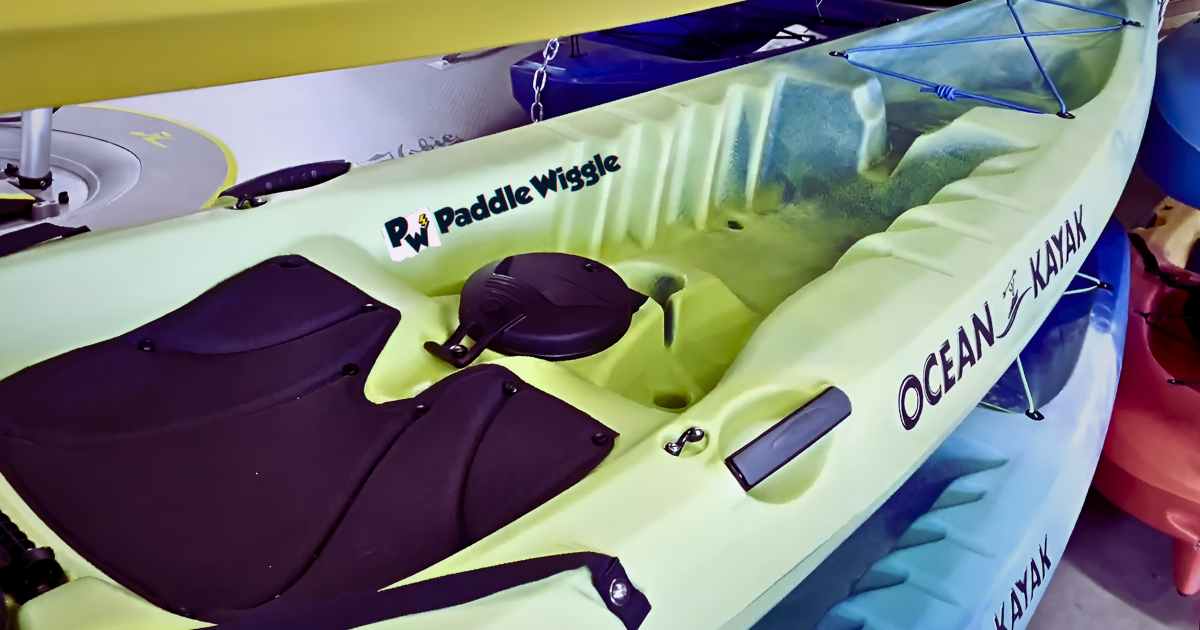

This kayak is great for solo paddlers because it’s versatile and stable. Even if you’re paddling alone, it works really well. You can adjust the seats to find the perfect balance and control. It’s easy to handle, and the wide shape keeps it steady in the water.
Whether you’re in calm lakes or gentle rivers, this kayak gives you a comfortable and enjoyable solo paddling experience.
#2. Perception Tribe 13.5


Another good option for solo paddlers is the Perception Tribe 13.5. It has a big space for you to sit comfortably and plenty of room for your solo adventures. Even though it’s a bigger kayak, it stays stable even with just one person.
You can paddle through different water conditions without a problem. It also has enough space to bring all your gear for longer trips, like fishing or touring.
#3. Wilderness Systems Pamlico 135t


The Wilderness Systems Pamlico 135T is made for both solo and tandem paddling. It’s perfect for people who sometimes paddle alone but still want the option to paddle with a partner.
You can adjust the seats to be super comfy and in control when paddling alone. It’s super easy to handle and stays on track while paddling solo.
Learn More
Can I Use Any Tandem Kayak For Solo Paddling?
Yes, most tandem kayaks can be used for solo paddling. However, it’s recommended to choose models that are specifically designed for solo use as they offer better maneuverability and control.
How Do I Adjust The Seat Position For Solo Paddling?
To adjust the seat position for solo paddling, sit closer to the center of the kayak. This helps maintain balance and control while minimizing weight distribution challenges.
Is It Harder To Paddle A Tandem Kayak Alone?
While there may be some initial challenges in getting used to paddling a tandem kayak alone, it becomes easier with practice and proper technique. The key is adjusting your seating position and finding the right balance.
What Are The Benefits Of Using A Tandem Kayak Solo?
Using a tandem kayak solo provides extra space for gear or equipment, enhanced stability due to its wider design, and increased versatility for longer trips or additional supplies.
Are There Any Disadvantages To Using A Tandem Kayak Solo?
One potential disadvantage is control challenges in windy conditions or rough waters due to the larger size of these kayaks. However, with practice and experience, these challenges can be overcome.
Final Words
To sum it up, using a two-person kayak for solo paddling is a good idea if you like kayaking alone but want the stability and roominess of a bigger kayak. It might need some changes and thinking, but it has many benefits. By making adjustments and using the right techniques, you can enjoy a two-person kayak’s stability, storage space, and flexibility while having fun on your own in the water.



